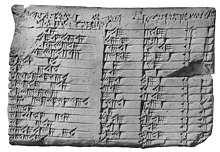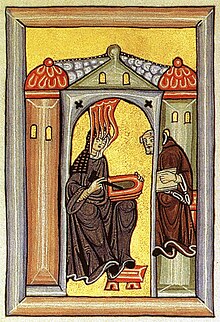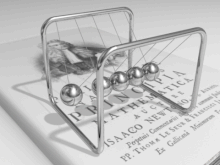Siensia
| Supkategoria di | sistema di conocemento |
|---|---|
| Parti di | science, technology, engineering, and mathematics |
| Producuci of brinda servicio | konosementu |
| Hashtag | science |
| Karakterisá pa | scientific evidence, science award |
| Historia | Historia di ciencia |
| Praktiká pa | scientist, scientist trainee |
| Ta utilisá | scientific method |
| WordLift URL | http://data.thenextweb.com/tnw/entity/science |
| Mastodon instance URL | https://fediscience.org, https://mstdn.science, https://scicomm.xyz |
| NCI Thesaurus ID | C61397 |
| Lo kontrario di | non-science, pseudoscience, antiscience |
Siensia ta un disiplina ku ta atkerí, organisá, i verifiká konosementu humano sistemátikamente, i ta referí tambe na e komunidat den kua e konosementu aki ta wòrdu kolekshona. E komunidat aki tin su mesun métodonan i konvenshonnan pa yega na un sèt koherente di hipótesis, lei i teoria, pa disiplina.
Siensia i teknologia ta komponentenan importante den sosiedat industrialisá moderno. Un distinshon ta wòrdu hasi entre siensia fundamental i siensia apliká. E último ta dirigí na e aplikashon práktiko di konosementu i influensiá ariba realidat. Kombinashonnan di tur dos tipo di siensia ta posibel.
Pa medio di presentashonnan i debatenan durante konferensianan i simposio, i pa medio di revishon di kolega (Ingles: peer review) di publikashonnan sientífiko, e komunidat sientífiko ta traha pa garantisá e kalidat di siensia, su métodonan i interpretashon di resultadonan.
Karakterístikanan
[editá | editá fuente]Siensia ta investigá realidat na un manera sistemátiko i profundo. E meta ta pa komprondé esakinan mihó, pronostiká fenómenonan i tin biaha asta kontrolá nan. Siensia moderno tin e siguiente karakterístikanan importante:
- Buskando konekshon: Siensia tin komo meta pa deskubrí patrona i leinan profundo ku por splika vários fenómeno. Matemátika hopi biaha ta wòrdu usá pa deskribí e relashonnan aki.
- Sostené pa evidensia: Teorianan ta wòrdu sostené ku dato for di eksperimentonan, investigashon di vèlt, òf investigashon di fuente. Investigashon matemátiko tin biaha ta usa simulashon en bes di eksperimentonan físiko.
- Testmentu: Deklarashonnan sientífiko mester ta verifikabel i falsifikabel. E proseso aki di krítika i mehorashon ta hasi siensia mas fuerte. Deklarashonnan sin un base di testmentu ta inútil pa siensia.
- Pronóstiko: Un bon teoria por pronostiká fenómenonan den futuro i ta wòrdu husgá a base di e pronóstikonan ei.
- Outokrítika i transparensia: Siensia ta indiká e limitashonnan di método, suposishon i resultado. Investigadónan ta hasi nan dato i método públiko pa otro por kontrola i ripití e investigashon.
- Publikashon i kontrola: Resultadonan ta wòrdu kompartí a base di artíkulo sientífiko i na konferensia. Koleganan ta evaluá esaki pa medio di revishon, proponé mehorashon òf duna krítika.
- Aktitut neutral: Siensia ta independiente di ideologianan, religion òf interes komersial. E ta dependé eksklusivamente ariba opservashon ophetivo i splikashon rashonal.
- Koperashon: Hopi biaha sientífikonan ta traha den grupo i ta konsultá denter di komunidatnan nashonal i internashonal. Investigashon ta un aktividat sosial.
- Aplikashon práktiko: Ademas di investigashon fundamental, siensia ta enfoká tambe ariba aplikashonnan práktiko, manera den teknologia i medisina.
Siensia kontra pseudosiensia
[editá | editá fuente]E karakterístikanan aki por wòrdu usá pa distinguí siensia real for di pseudosiensia òf siensia inkorekto. Pseudosiensia ta usa teorianan i datonan no probá i ku no ta reprodusibel. Esaki por resulta for di aktitut slòns, e uso di teorianan debil, òf asta froude.
Desde añanan 2010, tabatin mas atenshon na transparensia i reprodusibilidat den siensia, parsialmente pa medio di proyektonan manera e Proyekto di Reprodusibilidat (Ingles:Reproducibility Project). E inisiativa aki a enfatisá ku un kantidat grandi di estudio no por wòrdu repliká, loke ta kondusí na un asina yamá krísis di replikashon. Awendia, mas i mas revista sientífiko ta rekerí investigadónan pa hasi nan protokòlnan públiko di antemano pa garantisá reprodusibilidat.
Siensia komo un komponente sosial
[editá | editá fuente]
Den sosiedat oksidental, siensia ta wòrdu mira komo un parti esensial di sosiedat, ku e meta pa atkerí konosementu. Siensia tin su propio karakter i ta sigui leinan, métodonan i konvenshonnan spesífiko. Segun Bergsma i Van Petersen, siensia por wòrdu distinguí den tres aspekto:[1]
- Instituto di siensia: Esaki ta inkluí universidatnan, profesornan i e organisashon di institutonan akadémiko.
- Aktividat sientífiko: Sientífikonan ta ehekutá aktividatnan manera midi, opservá, registrá, eksperimentá, organisá i interpretá. Nan ta desaroyá konseptonan, formulá hipótesis i tèst nan. Matemátikonan ta preokupá prinsipalmente ku formashon di konsepto i formashon di hipótesis, pero generalmente nan no ta eksperimentá. E aktividatnan aki ta wòrdu referí na nan komo práktika sientífiko.
- Produktonan sientífiko: Esaki ta trata di konosementu ku ta surgi for di aktividatnan sientífiko. E konosementu aki ta un rekonstrukshon sistemátiko di realidat, den kua sientífikonan ta purba kontestá preguntanan i yena buraku den konosementu. Matemátika ta enserá formashon di konsepto abstrakto en bes di un rekonstrukshon direkto di realidat.
Siensia apliká
[editá | editá fuente]Siensia no ta wòrdu praktiká solamente den institutonan akadémiko. Hopi sientífiko ta traha den laboratorionan industrial, hospital òf institutonan militar. E siensia no-akadémiko aki hopi biaha tin un enfoke diferente: usabilidat ta hunga un ròl importante aki ademas di konfiabilidat. Ehèmpelnan ta:
- Institutonan ku ta sostené polítika: manera RIVM (Rijksinstituut voor Volksgezondheid en Milieu), kaminda konosementu sientífiko ta wòrdu apliká pa sostené polítika.
- Laboratorionan industrial di R&D (Ingles: Research and Development; Investigashon i Desaroyo): manera na Unilever, kaminda investigashon ta kondusí na produktonan, prosesonan i patentenan nobo.
Ademas di midi i komprendementu, siensia apliká tambe ta preokupá ku desaroyo. Esaki ta sosodé, por ehèmpel, den e sektornan militar, farmaseutiko òf di kuminda. Siensia ta wòrdu usá pa desaroyá produktonan òf konseptonan ku ta ofresé un perspektiva nobo.
Historia
[editá | editá fuente]Siensia ta enfoká ariba investigashon intenshonal i konosementu sistemátikamente atkerí. Den e mundu oksidental, e tradishon aki a wòrdu asosiá ku pensamentu akadémiko for di tempu di Platón. Spesialmente for di Edat Medio padilanti, siensia a tuma forma den institutonan manera akademia, universidat i sentronan di investigashon, inkluyendo laboratorionan spesialisá.
Promé sivilisashonnan
[editá | editá fuente]
E promé formanan di siensia a aparesé den sivilisashonnan antiguo manera Mesopotamia, India, Egipto, Persia, China i bou di e Mayanan na Mexico. E tradishonnan skirbí di mas bieu ta bini di Sumer, aktualmente Irak. Alrededor di 3500 a.K. pueblonan di Mesopotamia a kuminsá registrá nan bestianan i otro kuentanan ku sifra. Nan tabata preokupá ku matemátika tambe. Un ehèmpel di esaki ta un tabla di klei, Plimpton 322, di mas o ménos 1800 a.K., ariba kua ta aplika e principio di Pitágoras.
Den e sivilisashonnan antiguo aki no tabatin institushonnan spesífikamente pa siensia. Esakinan a aparesé solamente despues na Gresia, bou di influensia di pensadónan manera Aristóteles, i a wòrdu desaroyá mas aleu den universidatnan Oropeo desde siglo 13. Te ainda konosí, e promé sivilisashonnan no a kombiná resultadonan práktiko ku rasonamentu teorétiko. Ta te na Gresia antiguo i despues den Edat Medio ku filósofonan na universidatnan di katedral a kuminsá desaroyá un epistemologia sistemátiko. Esaki eventualmente a duna lugá na pensamentu moderno i eksperimental.
Antigwedat klásiko
[editá | editá fuente]Den antigwedat klásiko, siensia tabata enfoká prinsipalmente ariba komprondementu di e kosmos. Esaki a kondusí na e desaroyo di filosofia natural i despues filosofia klásiko. Disiplinanan práktiko manera medisina, astronomia (pa kalènder i pronóstiko di eklipse), i astrologia (pa pronóstiko di futuro) tambe a hunga un ròl importante. Pensadónan di e tempu ei tabata mira nan mes komo filósofo natural, profeshonal (manera dòkter, maestro òf astrólogo).
Siensia griego tabata fundamentalmente filosofia natural. Pensadónan griego a dirigí nan mes ariba pensa teorétikamente tokante naturalesa, sin hasi hopi eksperimento pa tèst nan ideanan. Esaki a kontrastá ku siensia di Oropa oksidental despues, kaminda eksperimentonan a tuma un ròl sentral. Den kultura griego, konosementu a base di e sentido i eksperimentashon hopi biaha tabata wòrdu despresiá. Artesania i e uso di hèrmènt tabata wòrdu konsiderá inferior i lagá pa katibunan. Filósofonan tabata kere ku e mente tabata e úniko fuente konfiabel di konosementu, un punto di bista konosí komo rashonalismo.
Den Platonismo, e idea tabata ku tur kos por wòrdu komprondé pa medio di rasonamentu lógiko i konosementu innato (konosementu a priori), sin e nesesidat di eksperimentashon. Tin biaha esaki a kondusí na ideanan ku despues a resultá di ta inkorekto, manera e bista di mundu geoséntriko. Filósofonan griego a rasoná ku e sentidonan por gaña nos, miéntras ku rason a duna nos akseso na konosementu berdadero.
Ta te na Edat Medio, a sosodé un kiebro ku rashonalismo, danki na e filosofia eskolástiko, kristian. Desde, alrededor di aña 1200, universidatnan Oropeo a hasi siensia eksperimental posibel, loke a forma e base pa siensia moderno.
Edat Medio
[editá | editá fuente]
Siensia den kuminsamentu di Edat Medio tabata un historia di dekadensia i rendimentu. Den e parti Latin di e Imperio Romano, siensia tabata ménos fuerte ku den e tradishonnan griego. Despues di e kaida di e Imperio Romano oksidental, kousá pa invashon di pueblo germánico i otro pueblonan, sivilisashon Romano na Europa oksidental pa gran parti a kai den otro. Guera i moveshonnan di poblashon práktikamente a para desaroyo intelektual, i hopi teksto sientífiko klásiko a bai pèrdí.
Sinembargo no ta tur konosementu a bai perdi. Monasterionan, a hunga un ròl krusial den konserbá i kopia manuskritonan. Edukashon i kultura a sigui eksistí, ounke ariba un eskala limitá. Durante e reinado di Gran Carlos (742–814), skolnan a wòrdu fundá kaminda konosementu klásiko a wòrdu retransmití.
Meimei i fin di Edat Medio, e interes den siensia natural a haña un bida nobo durante renasementu di siglo 12. Monasterio i katedralnan a funshoná komo sentron di konosementu kristian i a krese bira universidatnan rònt di aña 1200, manera esnan di Bologna, Oxford i Paris. E universidatnan aki a hunga un ròl krusial den e desaroyo di pensamentu sientífiko moderno, na kua teologia tambe a atribuí.
Filosofia eskolástiko a desaroyá na e universidatnan aki, ku a enfatisá lógika i e importansia di opservashon i eksperensia (empirismo). Den pensamentu eskolástiko, ku movementunan manera nominalismo (e énfasis ariba e individuo) i boluntarismo (e boluntat komo e forsa impulso), e fundeshi a wòrdu poné pa pensamentu sientífiko moderno. Esaki a enfoká ariba splika naturalesa a base di eksperimentonan, un aserkamentu konosí komo empirismo rashonal òf pensamentu induktivo.
Investigadónan di Edat Medio a apliká e métodonan aki pa komprondé fenómenonan natural i a hasi avansenan importante den metodologia i kontenido, spesialmente den e tereno di fisika. E desaroyonan aki a marka un paso importante pa siensia moderno.
Renasementu
[editá | editá fuente]
E Renasementu tabata un periodo den historia Oropeo den kua arte i siensia a floresé danki na e redeskubrimentu di antigwedat klásiko. E renasementu aki a kondusí na kambionan importante den pensamentu sientífiko. Un punto di kambio tabata e Kaida di Konstantinopla na 1453, ku a kondusí na tekstonan klásiko di e Imperio Bizantino ku a wòrdu studia atrobe na Europa. Rònt di e mesun tempu, e invenshon di imprenta a hasi posibel pa plama konosementu i ideanan mas lihé i ampliamente, demokratisando edukashon i investigashon.
Sinembargo, algun historiadó ta konsiderá e kuminsamentu di Renasementu, en partikular, komo un periodo di stagnashon den e siensianan natural. Humanistanan a enfoká nan atenshon prinsipalmente ariba materianan sosial i di humanidat, manera polítika i historia, a kosto di siensia natural i matemátika apliká.
Revolushon sientífiko
[editá | editá fuente]
Aunke ta difísil pa determiná e punto eksakto di e revolushon sientífiko, pero 1543 ta konsidera komo un aña di logro. E aña ei, Nicolaus Copernicus a publiká su obra pionero, De revolutionibus orbium coelestium ('Tokante e Revolushon di Kurpanan Selestial'), den kua el a introdusí e modelo helioséntriko di universo. Na e mesun momento, e promé buki kompleto tokante anatomia humano, De humani corporis fabrica libri septem, skirbí pa Andreas Vesalius, a keda publiká.
Den e dékadanan ku a sigui, un kambio fundamental a tuma lugá den pensamentu sientífiko, spesialmente denter di fisika, astronomia i biologia. E transformashon aki no solamente a enserá deskubrimentu i teorianan nobo, pero tambe e desaroyo di instituto di investigashon i un kambio den e bista general di mundu. E proseso aki a pone e fundeshi pa siensia moderno i a kambia kon hende ta komprondé nan lugá den universo.
Siensia aktual
[editá | editá fuente]
E fundeshi pa siensia moderno a wòrdu poné den siglo 17, ku un realisashon kresiente bou di sientífikonan ku opservashon i eksperimentashon ta e yabi pa atkerí konosementu. E aserkamentu eksperimental aki a konstruí ariba ideanan di filosofia di Edat Medio. Manera menciona anteriormente, e pensamento nobo aki no a surgi diripiente, pero danki na un revolucion metodológiko ku a kuminsa rònt di aña 1200 ku fundashon di e prome universidadnan. E revolushon aki, den kua nominalismo di Edat Medio a hunga un ròl importante, a pone e fundeshi pa e revolushon sientífiko di siglo 17. Segun e historiadó Eduard Jan Dijksterhuis, e periodo aki a kondusí na un "mekanisashon di e bista di mundu", ku a kulminá ku e mekanika klásiko di Newton.
Desde siglo 18, siensia natural i matemátika a kuminsá dividí den disiplinanan spesialisá, manera biologia. Despues, siensia nobo a aparesé, inkluyendo sosiologia i sikologia. Den siglo 19, siensia a tuma un karakter mas profeshonal i institushonalisá. E tendensia aki a sigui den siglo 20, durante kua mas spesialisashon a tuma lugá. Na mes momento, e importansia sosial di siensia a krese konsiderablemente, ku un influensia grandi ariba ekonomia, produkshon i gobernashon.
Fuente, nota i/òf referensia
|

